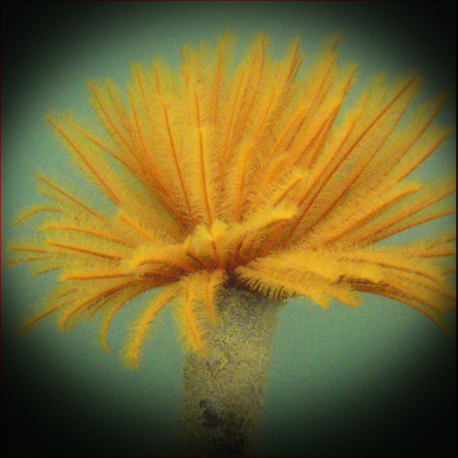More info
Datasheet
| Minimum Tank Size | 50 litres / 13.21 US gallons |
| Maximum Size | 6.0cm / 2.36inches |
| Reef Compatible | Always reef safe |
| Temperament | Peaceful |
| Temperature | 22.2°C / 71.96°F - 25.6°C / 78.08°F |
| Specific Gravity | 1.020-1.025 |
| Carbonate Hardness | 8-12 |
| pH | 8.1-8.4 |
General Description
The Giant Feather Duster Worm, scientifically known as Eudistylia polymorpha, belongs to the Sabellidae family. These tubeworms construct tubes using a robust, parchment-like exudate, although the Glomerula genus secretes tubes made of calcium carbonate. They feature a crown of feeding tentacles that extend from their tubes and primarily feed on phytoplankton and zooplankton.
Aquarium Suitability
Considered suitable for aquariums with care, these worms require daily target feeding with a mix of plankton to prevent starvation. It is essential to bury the tube housing the worm in the substrate of at least a 50-liter tank to mimic its natural habitat successfully.
Demands and Care
Being average in hardiness, the Giant Feather Duster Worm has a peaceful temperament and is reef-safe, making it suitable for reef setups. It is crucial to monitor water conditions within the ranges of pH 8.1-8.4, dKH 8-12, specific gravity 1.020-1.025, and temperature between 22.2-25.6°C to ensure their well-being.
Reef Suitability
These worms are known to be reef-safe and compatible with a reef tank environment.
Aquarium Setup
When setting up an aquarium for these worms, it is vital to bury their tube in the substrate and provide a controlled environment with stable water parameters. Regular target feeding with phytoplankton and zooplankton is essential for their survival.
Behaviour
The Giant Feather Duster Worm is a peaceful creature that can fall victim to predatory fish and shrimp that may try to feed on its feeding crown, which could lead to the worm's demise. If the crown is lost, it has the potential to regrow within a month or two under optimal conditions.
Feeding and Diet
For optimal health, these worms should be fed once a day with a nutritious mix of phytoplankton and zooplankton like Cyclops and pods to meet their dietary requirements.
Dimorphism
While information on dimorphism is not specified, these worms are known to reproduce in captivity if provided with adequate conditions.
Habitat and Distribution
The Giant Feather Duster Worm is commonly found in the East Pacific region, where it inhabits tubes in the substrate and feeds on planktonic organisms to sustain its diet.

